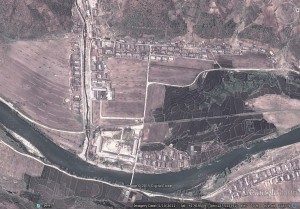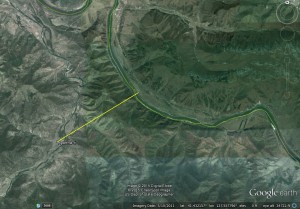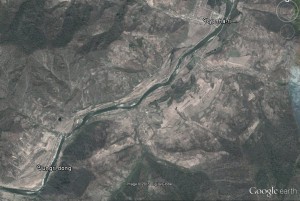This week I read the following report in the Washington Free Beacon (2015-3-13):
North Korea’s communist government has created a dwarf village in a remote part of the country where short people it regards as undesirables are prevented from reproducing and forced to fend for themselves within the harsh Stalinist system.
The abuse of North Koreans who have dwarfism, a genetic condition that produces short bodies and disproportionate limbs, is the latest disclosure of widespread human rights abuses within the country. A U.N. commission report a year ago charged the regime with “crimes against humanity.”
Several North Korean defectors disclosed the existence of the village, called Yeonha-Ri, and said it is located in Kimhyongjik County, a border region in northeastern Ryanggang Province. The province is named after North Korea’s founding dictator Kim Il-Sung’s father, Kim Hyong-Jik.
Dwarfs are persecuted by the regime under a policy that combines Korean superstitions about physical deformities manifesting from personal or ancestral sin, and the hardline communist regime’s demand that all citizens must work, according to North Korean defectors.
As part of the anti-dwarf measures, all people under 120 centimeters in height, or just under four feet, have been forced to relocate to the farming village at Yeonha-Ri.
One defector, who disclosed details of the village on condition of anonymity, said the North Korean government originally planned to exterminate the dwarfs as part of a policy of eliminating those within the population with undesirable physical traits. But concerns about international reaction to the population “cleansing” instead resulted in allowing the dwarfs to set up the farming village.
The goal of the separation is to prevent the dwarfs from marrying and reproducing. To that end, they are forced to undergo sterilization.
Also, North Korean dwarfs face a greater risk of starvation because they are not given the same food rations as other North Koreas.
Travel is also restricted under the dubious claim that as little people the dwarfs could be crushed while riding on crowded train cars.
The Free Beacon article later references this article in the UK’s Daily Mail.
For what it is worth, Yeonha-ri, or Ryonha-ri (련하리) as the North Koreans call it, can be found on Google Earth at 41.418403°, 127.513423°. Here is a satellite image:
At its closest point, the village is just under 4 km from the Chinese border.
Commission of Inquiry on Human Rights in the Democratic People’s Republic of Korea briefly mentioned dwarfism in the detailed findings document:
Another research institute based in the ROK reported that human rights violations against persons with disabilities include the segregation and forced sterilization of persons suffering from dwarfism.
The citation for this quote is: KINU, White Paper on Human Rights in North Korea (2013), pp. 442-444. You can download the report here (as well as the most recent 2014 report, which does not mention “dwarfism” but rather “midget persons”).
The 2013 KINU report is based on defector interviews, so it is subject to the usual caveats.
The KINU 2013 survey respondents identify three locations of a dwarf village in Kim Hyong-jik County.
The first is a village named “Sangchangri” (Sangchang-ri), identified by two defectors. I am unable to locate a village by that name in Kim Hyong-jik County. It does not appear on any of my North or South Korean maps. I am aware of two villages named Sangchang-ri, but they are in North and South Hamgyong respectively.
Three other defectors independently report that they knew of a village for little people near Koup-gu, which is just north of Ryonha-ri (though they specifically identify Jungri-dong which is just 2.5 km south of Ryonha-ri).
A third location was identified as Wolthan Worker’s District (41.408095°, 127.059341°) which is in Kim Hyong-jik county, but on the western side.
The KINU reports also go on to say that the current legal status of little people is much more complicated than the simple narrative of identification, sterilization, and isolation that is reported in the contemporary media–especially following the death of Kim Il-sung.
Previous KINU reports also describe villages for little people in other parts of the country.
The reports of mistreatment of little people, however, date back many years. Hwang Jag-yap, who defected to South Korea in 1997 reported:
Concentration camps [plural] for persons of very short stature were set up in Jungpyung, in South Hamkyung province, after express orders from Kim Il-sung to isolate them to “prevent dwarves from multiplying.”
Additionally, I have a declassified report (FOUO) titled “Translations on Korean Affairs” published on May 18, 1979. It also mentions a dwarf village (p35):
In North Korea, in order to prevent the proliferation of dwarfs (deformed dwarfs), they are all put in a cooperative farm near Kanggye, Chagang Province, which is completely isolated from the outside. Therefore you cannot see dwarfs anywhere else.
This report gives the impression that there was only one village for little people and it was not so close to the Chinese border.
So there is lots of information on this topic that goes back many years and is not very consistent. Maybe somebody with more time than me could do a timeline of all the data and try to standardize all of the geographic names given.



